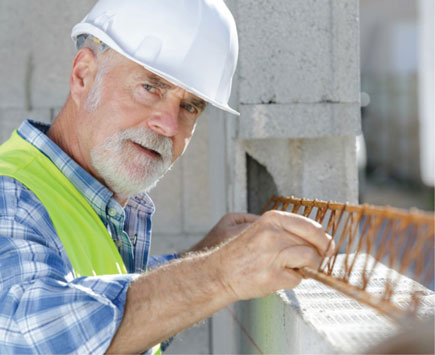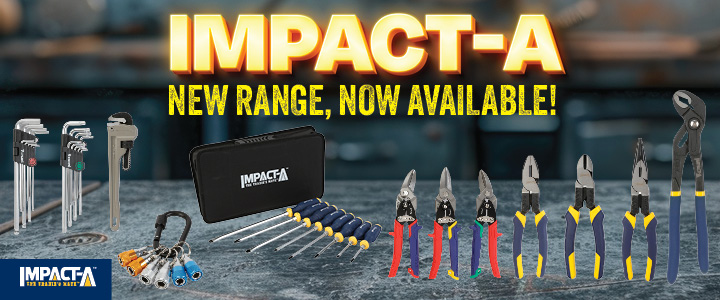Encouraging more mature age apprentices to take on a trade will become more important than ever as Australia tries to meet labour demands in the aftermath of the pandemic. By Cameron Cooper
As Australia seeks to build its way out of a post-pandemic economic malaise, an army of mature age apprentices is likely to play a key role in the rebound. The Federal Government has promised to fast track infrastructure projects worth $7.5 billion as part of its October 2020 budget announcements, creating the hope of a pipeline of initiatives that will keep building and construction workers busy across many trades for years to come.
“It’s the best decision ever,” says Terry McEvoy, director of the Department of Trades and Engineering Technologies at Swinburne University of Technology. “The way out of our economic crisis will be through infrastructure growth, and apprentices can get on a trade now and know that work won’t be slowing down for another 10 to 15 years.” He expects mature age apprentices—defined as those aged 21 and above—to especially embrace the flexibility of working for a company, subcontracting or starting their own business. “The world’s their oyster—and having a trade behind them gives them those choices.”
BARRIERS TO CLEAR
While the long-term outlook for mature age apprentices looks positive, some training programs have taken a hit during COVID-19.
Dale Scott, a field officer at industry association Master Plumbers, says in Melbourne, for instance, stage 4 lockdown rules have reduced the allowable number of workers on construction sites. As a result, many apprentices have experienced roster cuts. Nevertheless, he says there is anecdotal evidence during the crisis to suggest that older workers are seeking a career change, including pursuing licenced registered trades such as plumbing and electrical. “They are highly desirable in that they’re more bulletproof than other trades,” Scott says.
One challenge for mature age apprentices is that industry regulations dictate that they initially receive a higher rate of pay, regardless of their experience. This can put them at a hiring disadvantage when competing with similarly skilled teenagers. Scott advocates incentives for employers—along similar lines to the Job Keeper wages subsidy that the Australian Government has introduced during the pandemic to help pay employees’ wages—to offset some of the imposts of older apprentices. “It’s a tricky balancing act, but it would be nice to see something similar to Job Keeper for mature age apprentices.”
To further embolden the industry, McEvoy also calls for greater funding of training organisations to ensure they can prepare the industry leaders of tomorrow. “From a selfish perspective there needs to be that investment so we have the latest technology and the latest understanding to keep our staff up to date,” he says.
GOVERNMENT SUBSIDIES THE KEY
It is clear that the Australian Government wants to back the apprenticeship space, with employers in October praising a new wages subsidy as Prime Minister Scott Morrison pledged to add 100,000 apprentices and trainees by paying half their wages over the next year. The $1.2 billion commitment came on the back of funding earlier this year whereby small businesses were offered up to $7000 of wage assistance each quarter in a bid to retain existing apprentices and trainees.
With Job Keeper winding down, Canberra has also unveiled its Job Maker hiring credit program in a bid to generate jobs. Under the scheme, employers will receive a credit for each new job they create —$200 a week for 16 to 29-year-olds, and $100 a week for 30 to 35-year-olds.
While Scott welcomes Job Maker, he doubts it will specifically assist mature age apprentices. “An employer who is looking purely at the dollars will take the younger apprentice and take the Job Maker incentive as well.” He hopes some bosses will regardless use the subsidies to take on older workers at lower overall hiring costs. McEvoy is confident wages subsidies, while not perfect, will “make a big difference” and help employers, apprentices and training organisations.
WHAT BUSINESSES CAN DO
There were 272,505 apprentices and trainees in training as of March 2020, a decrease of 2.9 per cent from the year before, according to the National Centre for Vocational Education Research. The hope is that a post-pandemic building boom can boost numbers.
Scott says trade-based businesses can play their part in bringing on more mature age apprentices simply by having an open mind about the benefits they deliver. Too many bosses, he believes, simply employ younger apprentices because of cheaper hourly rates. “It’s about trying to go beyond the dollars to see the value you can get out of a mature age person and the value they can bring.”
With their extra maturity and life experiences, he says mature age apprentices often bring a higher level of stability and commitment— and register fewer sickies—than their younger cohorts. Many of them have already worked in the building and construction sector, and some may have multiple skills across disciplines such as carpentry, welding and boilermaking. “So when you can pick up someone like that, it’s a real bonus.”
For its part, Master Plumbers practises what it preaches, charging out its mature age apprentices at the same rate as juniors. “We take a hit on them initially, but we understand that we usually get an employee who is lower maintenance and who we get good reports on in terms of feedback.”
McEvoy agrees that mature age apprentices represent a great investment, including the growing band of female workers in the trades. “They have life experience and can set goals and targets and manage their own time,” he says. For those seeking a viable long-term career, he endorses an apprenticeship as the starting point. “If you’re a mature age person looking for a career change, trades are an absolute monty. They open so many doors.”
If you want to become a mature age apprentice or are a business looking to hire one, contact Master Plumbers (plumber.com.au) or its apprenticeship and labour hire division (plumber.com.au/pav).






